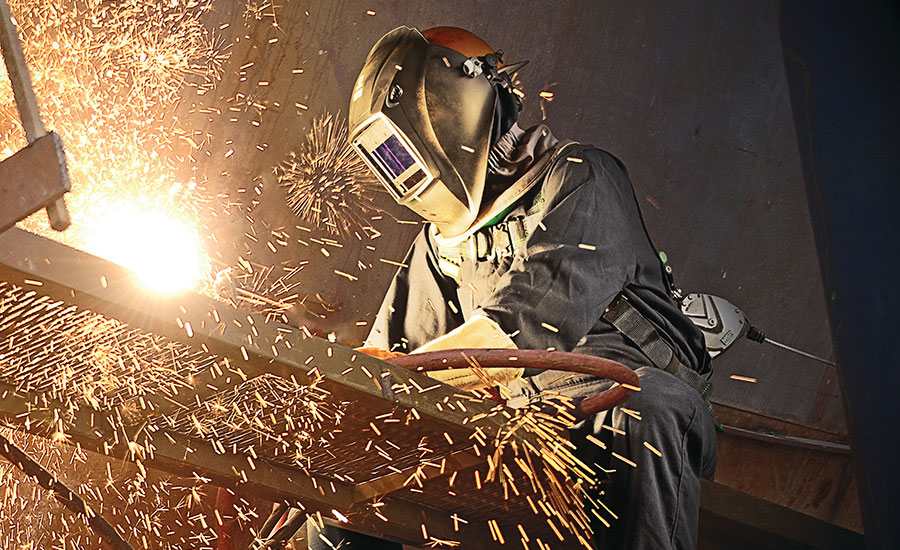The Importance of Welding WPS: Ensuring High Quality and Security in Your Projects
The Importance of Welding WPS: Ensuring High Quality and Security in Your Projects
Blog Article
The Ultimate Overview to Welding WPS Procedures: A Detailed Overview for Welders
In the intricate world of welding, Welding Treatment Specs (WPS) act as the foundation of ensuring top quality, consistency, and safety in welding procedures. Understanding the nuances of producing, implementing, and keeping an eye on WPS procedures is essential for welders looking to elevate their craft and meet industry requirements. As we dig into the different parts of a WPS and check out the complexities of certification and accreditation, we will uncover the vital function these procedures play in the world of welding. Let's get started on a trip to unravel the intricacies and value of WPS treatments in welding practices.
Importance of WPS Procedures
Comprehending the value of Welding Procedure Requirements (WPS) procedures is critical for ensuring the top quality and stability of bonded structures. WPS procedures function as a roadmap for welders, describing the needed steps, parameters, and products needed to accomplish an audio weld. By sticking to WPS standards, welders can make certain consistency in their work, bring about reputable and structurally sound welds.
One of the main reasons that WPS treatments are crucial is their role in keeping weld top quality and honesty. Adhering to the specified welding criteria and strategies outlined in the WPS helps protect against issues such as porosity, cracking, or incomplete fusion, which can endanger the stamina and durability of the weld. Additionally, WPS procedures are essential for guaranteeing conformity with market requirements and codes. By complying with well-known WPS standards, welders can demonstrate that their job meets the essential requirements for safety and quality, giving assurance to clients, assessors, and governing bodies. Essentially, the importance of WPS treatments can not be overstated, as they are essential to attaining regular, high-grade welds that fulfill sector requirements and specifications.

Elements of a WPS
A Welding Procedure Specification (WPS) commonly comprises necessary elements that detail the details requirements for implementing a weld, making sure uniformity and quality in the welding process. The key elements of a WPS include crucial variables such as base steels, filler steels, interpass and preheat temperature levels, welding processes, securing gases, welding placements, and post-weld heat treatment demands.
Base steels refer to the products being signed up with, while filler metals are made use of to fill up the void in between the base steels during welding. Preheat and interpass temperatures are vital for managing the warmth input and protecting against problems like breaking or distortion. The welding procedure describes the specific strategy to be used, whether it's gas steel arc welding (GMAW), shielded metal arc welding (SMAW), or one more approach. Securing gases protect the weld pool from climatic contamination. Welding placements specify the alignments in which welding can be executed. Post-weld heat therapy might be needed to eliminate stresses and enhance the weld's residential properties. A comprehensive understanding of these components is critical for creating a reliable and extensive WPS.

Certification and Certification
Having established the necessary parts of a Welding Treatment Spec (WPS), the focus now Read Full Report changes towards the important aspects of qualification and certification in welding techniques.

Accreditation, on the various other hand, is the official acknowledgment of a welder's qualifications by a relevant accreditation body or organization. Welding certifications are normally based on the particular welding processes, materials, and positions a welder is qualified to deal with. Holding a legitimate welding accreditation shows that a welder meets industry standards and is skilled to carry out welding jobs to the required specifications.
Developing a WPS
To establish a Welding Treatment Requirements (WPS) that fulfills sector criteria, cautious consideration of welding procedures, products, and functional parameters is essential. The initial step in developing a WPS is to determine the welding process to be used, such as gas metal arc welding (GMAW) or secured steel arc welding (SMAW)

Implementing and Keeping Track Of WPS
Upon settling the detailed Welding Treatment Specification (WPS) that diligently information welding processes, products, functional parameters, and quality assurance actions, the emphasis changes to efficiently implementing and checking the well-known treatments. Execution includes making certain that all welders entailed in the job are acquainted with the WPS and follow it diligently throughout the welding process. Efficient implementation and tracking of the WPS are important for ensuring the stability, stamina, and safety and security of the welded joints, ultimately adding to the total success of the welding project.
Final Thought
In final thought, understanding and complying with Welding Procedure Specifications (WPS) is critical for welders to guarantee high quality, uniformity, and safety in their work. By recognizing the elements of a WPS, obtaining proper credentials and certifications, developing detailed treatments, and implementing and checking them properly, welders can enhance their page abilities and efficiency in welding techniques. Abiding by WPS treatments is important for generating top quality welds and conference market standards.
In the complex globe of welding, Welding Treatment Specifications (WPS) serve as the backbone of ensuring quality, check this site out consistency, and safety and security in welding operations. The welding procedure outlines the particular technique to be made use of, whether it's gas steel arc welding (GMAW), protected metal arc welding (SMAW), or another technique.To establish a Welding Treatment Spec (WPS) that fulfills sector criteria, careful factor to consider of welding processes, products, and functional parameters is important. The very first action in creating a WPS is to determine the welding procedure to be used, such as gas metal arc welding (GMAW) or secured steel arc welding (SMAW)Upon finalizing the extensive Welding Treatment Spec (WPS) that meticulously information welding procedures, materials, operational specifications, and high quality guarantee measures, the emphasis changes to successfully executing and monitoring the well-known procedures.
Report this page